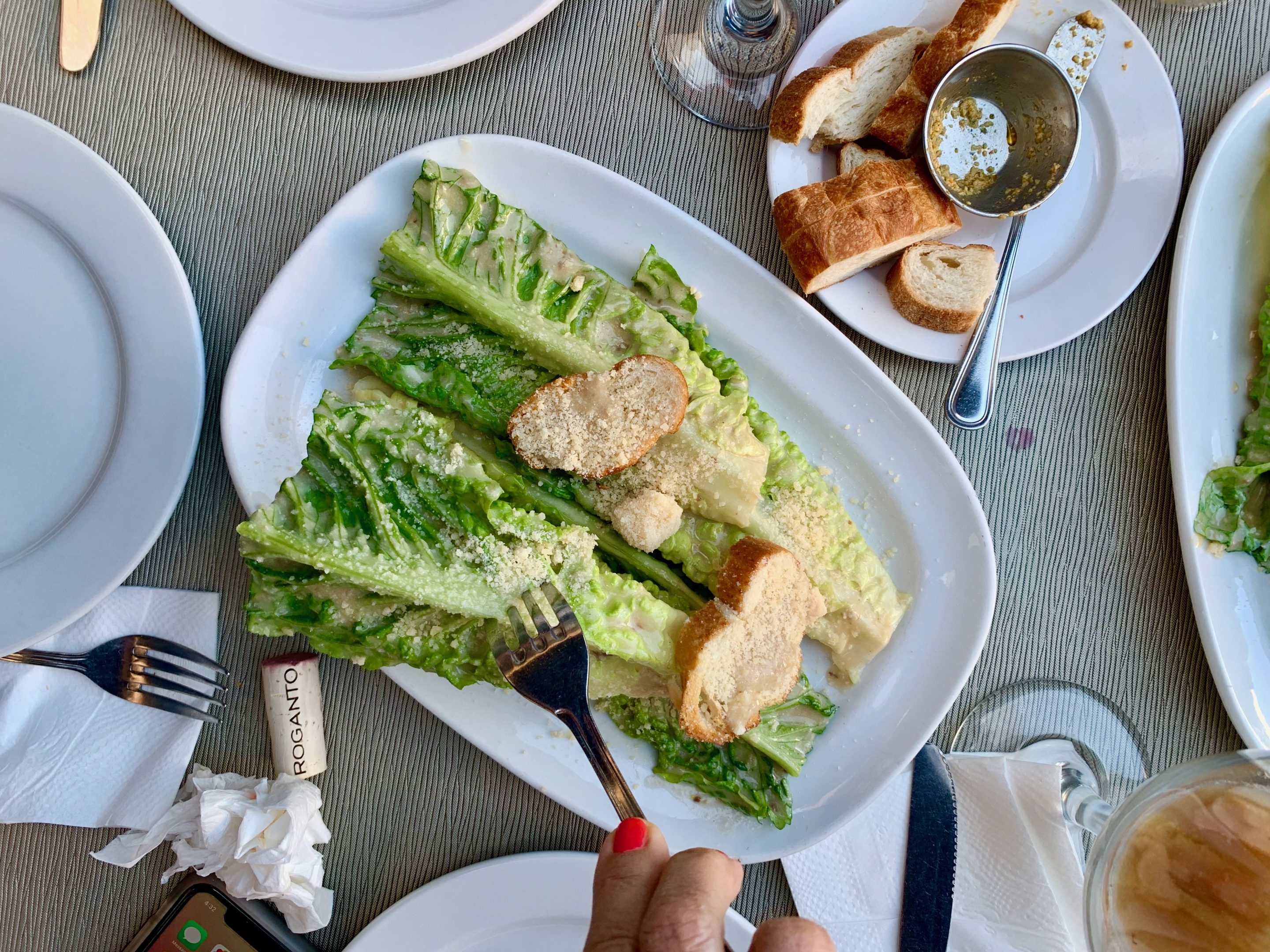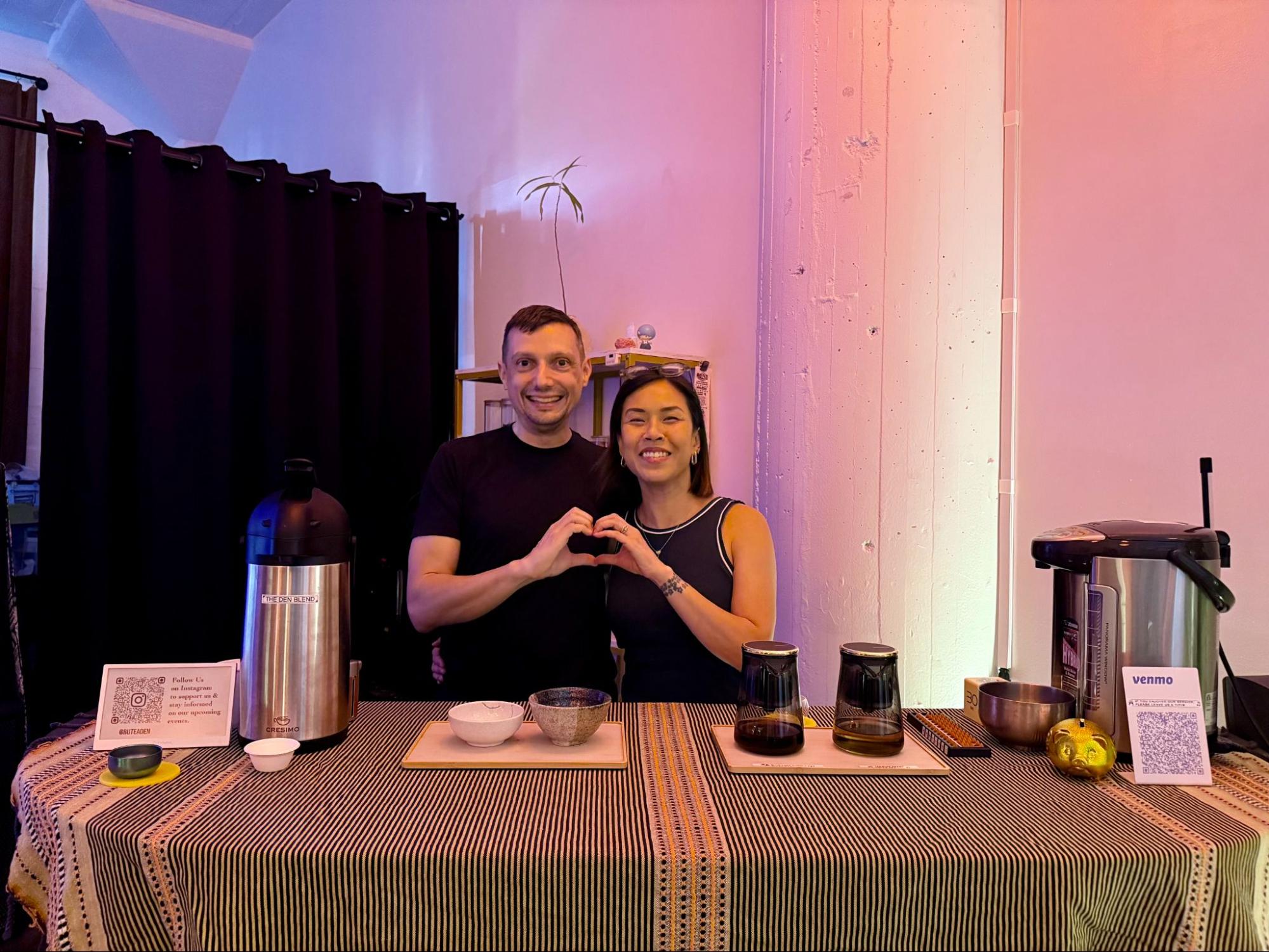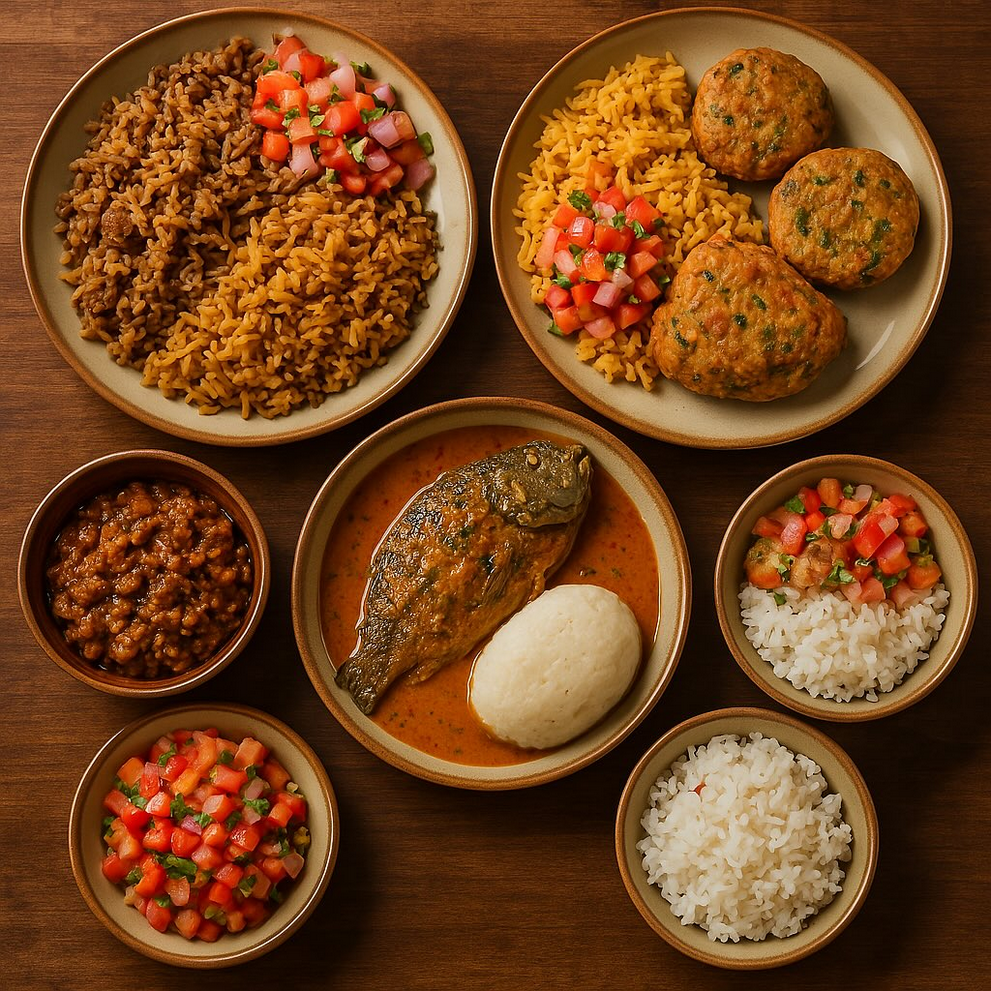After all, the Caesar salad is Mexican.
The Caesar salad is a quiet staple of Tijuana’s culture, a recipe of our own, which appealed to the upper echelons of society during the Prohibition era. The story of its creation, the truth of which is commonly lost amongst the many stereotypes surrounding Tijuana, is one not just of class but establishment in Tijuana. The Caesar salad in Tijuana represents hope that a day’s work could eventually result in your own legacy. The talent behind it is recognized regardless of who it is coming from, be it a waiter, a street vendor or performer or a world recognized chef like Javier Plascencia, owner of the Hotel Caesar in Tijuana.
As Mexicans native to Tijuana, my family and my region’s recipe had come to be defined by the Cheesecake Factories and Olive Gardens hawking out gelatinous, vinegary messes to the begging masses without even a whimper of its Tijuana identity.

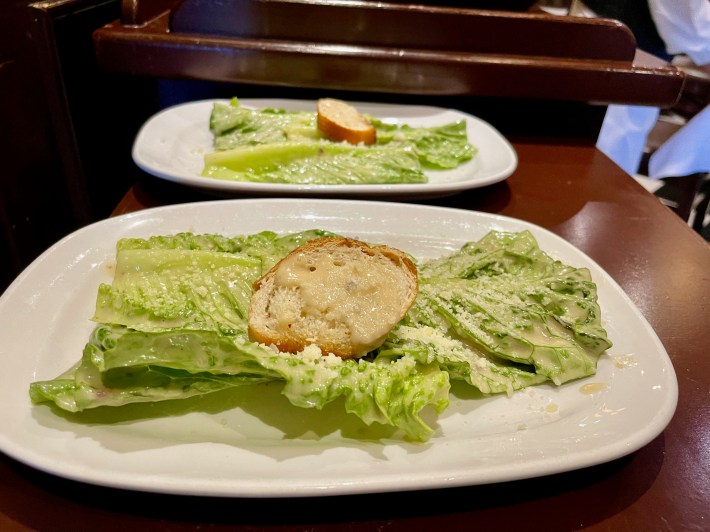
Seated beside chef Plascencia at his restaurant that he spent tens of thousands of dollars to restore, he translated each crucial step of the Caesar salad. Next to him, Efrain Montoya, a waiter who has spent the past 30 years working at Hotel Caesar and making their signature salads, stood behind a gigantic wooden bowl, wielding three wooden spatulas and methodically grabbing one small ceramic ramekin adding one ingredient after another to the bowl.
Plascencia estimated that at least 550 Caesar salads are tossed each day as Montoya slowly whipped the components together into a smooth, slightly translucent mixture, which glistened lightly atop whole Romaine lettuce leaves by the time he was finished. The anchovies, olive oil, mustard, garlic, Mexican limes (preferred over lemon), Parmigiano Reggiano cheese, Worcestershire sauce, and egg yolks seemed to vanish, leaving a dressing that can’t satisfactorily be bottled.
As Plascencia tells L.A. TACO, the Caesar salad became an icon of Tijuana "by accident." By the 1920s, Hotel Caesar had already become a fixture of Tijuana and a popular stop for those hoping to avoid Prohibition laws. Run by brothers Cesare and Alessandro Cardini, immigrants from Italy who opened restaurants in San Diego and Tijuana, found their business booming as an influx of American patrons visited. Livio Santini was another Italian immigrant and cook at the Tijuana location.
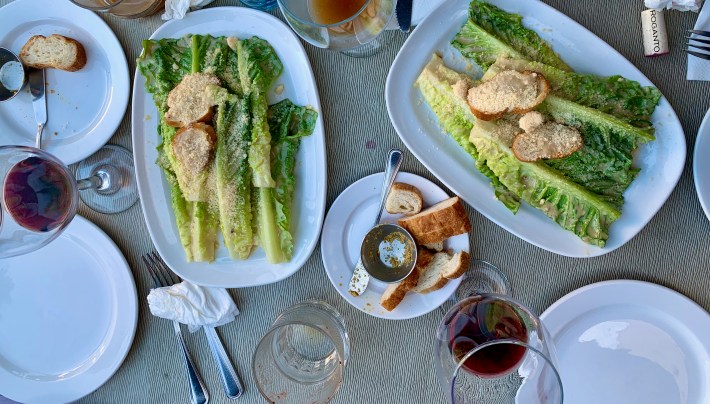
One evening in 1924, Santini decided to make himself an off menu meal based on his mother’s recipe. A customer called to him asking him what he ordered and Santini explained, but didn’t stop there. Instead he let them try it and eventually made the recipe tableside over whole Romaine leaves, now known as the Caesar salad, a meal traditionally eaten by hand while working the line in the kitchen (which explains are the leaves are traditionally left whole). Santini preferred to eat with his hands and found the style more efficient while working, Plascencia says. This is the official story of the Caesar salad, but you can find countless others within family histories across Tijuana. Santini himself, despite being acknowledged by Hotel Caesar, continues to be overshadowed by Cardini, who’s success bought him restaurants all throughout California and fame in Hollywood during its Golden Age.
Ownership of the dish gets tricky.
In spirit, it is entirely a Mexican dish. It’s certainly one of the first examples of the “BajaMed” cuisine that Tijuanense Chefs such as Plascencia are now known for. Certain changes to the dish, such as using lime instead of lemon, using olive oil from Baja that needs to be cut with another oil to relieve its bitterness, over the years have put more emphasis on its Mexican genealogy. But, it’s hard to argue that the original recipe made by Santini was not just plain Italian.
Its lore amongst Tijuanenses has expanded beyond the deceptively complex dressing, with likely hundreds of families (mine included) as a point of regional Mexican pride.
Plascencia doesn’t see a need to argue, and would not even describe it as a fusion dish. In fact, if he could tell people one thing about the Caesar salad, it would be: “It’s a Mexican dish.”
Plascencia comes from a line of chefs and restaurateurs in Tijuana and now runs six throughout Mexico. He’s traveled worldwide since his upbringing in the city and tasted foods the average resident might not even be able to imagine. However, he maintains a strong emotional attachment to the Caesar salad. “I grew up in my father’s restaurant and there was this one back in the 80s. We used to go there every Sunday, or I would go and look for my dad at the restaurant—it had very dark, dark wood, ” he says.
“It was a very Italian, old-style restaurant, and as soon as you walked into that restaurant you smelled garlic. The smell of olive oil and cheese, because they made it there. And I used to love it. And as soon as they saw me at the restaurant they would take me, because I was chubby, and make me a salad. Those memories have stayed with me.”
The day before I left for Tijuana was Mother’s Day. I sat across from my mother at The Grove’s Cheesecake Factory when she asked, “Do you ever think about how small we are? Also, does this taste like bleu cheese? It’s supposed to be Caesar.” I had and it was bleu cheese.
Oh how far the Caesar Salad has fallen from its Avenida Revolucion roots, but with every order of it around the world, whether in Italy or The Grove, its heritage is denigrated. I can already see myself smacking it out from in front of my mother on reflex the next time she orders it from the Cheesecake Factory. I’ll remind us both that the more food that you eat in hell, the further you’re damned to stay there.
Its lore amongst Tijuanenses has expanded beyond the deceptively complex dressing, with likely hundreds of families (mine included) as a point of regional Mexican pride.
The Caesar salad is just as much of a Tijuana construct as Avenida Revolucion's "zebra" donkeys with stripes painted onto them, for better or for worse. But as long as both prideful residents and curious visitors keep crossing the border to get a taste of the original salad that started it all, its refreshing, rich legacy it will live on forever.
Av. Revolución 1079, Zona Centro, 22350 Tijuana, B.C., Mexico.
This story is part of TIJUANA WEEK at L.A. TACO! A collaboration with Professors Amara Aguilar, Laura Castañeda, and USC Annenberg School for Communication and Journalism. Make sure to check back daily for more stories. A printable L.A. TACO Pocket Travel Guide to Tijuana will drop later this week so keep an eye out for that soon.
